This presentation provides educational content and worked examples pertinent to Denmark and are for use in combination with the POI Evaluation Guidelines
The expectations, when rating these tasks, are that analysts:
These concepts are of particular relevance to analysts rating tasks in Denmark
• Incorrect – URL reroutes
• can’t verify – no official source
• Approximate – Pin falls in outer circle with access restriction present in inner circle.
There are several reasons that a POI address might be incorrect. Here are two of these reasons with which analysts in Denmark need to be especially familiar:
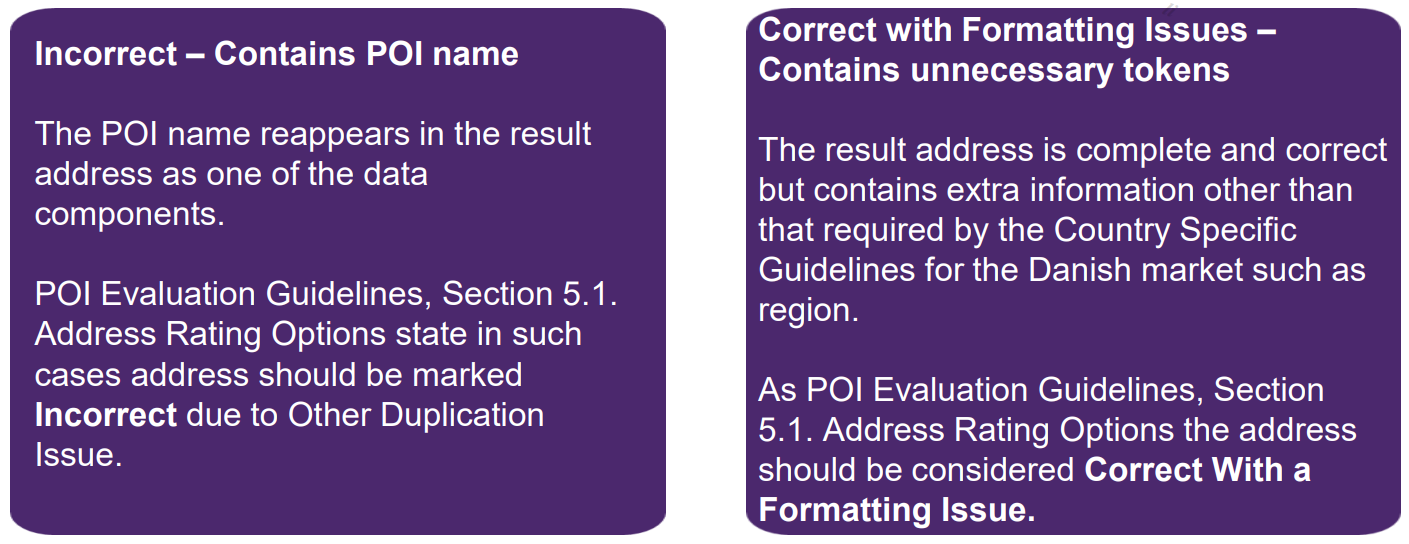
In this example, the result address contains the correct street name and number, postal code and locality.
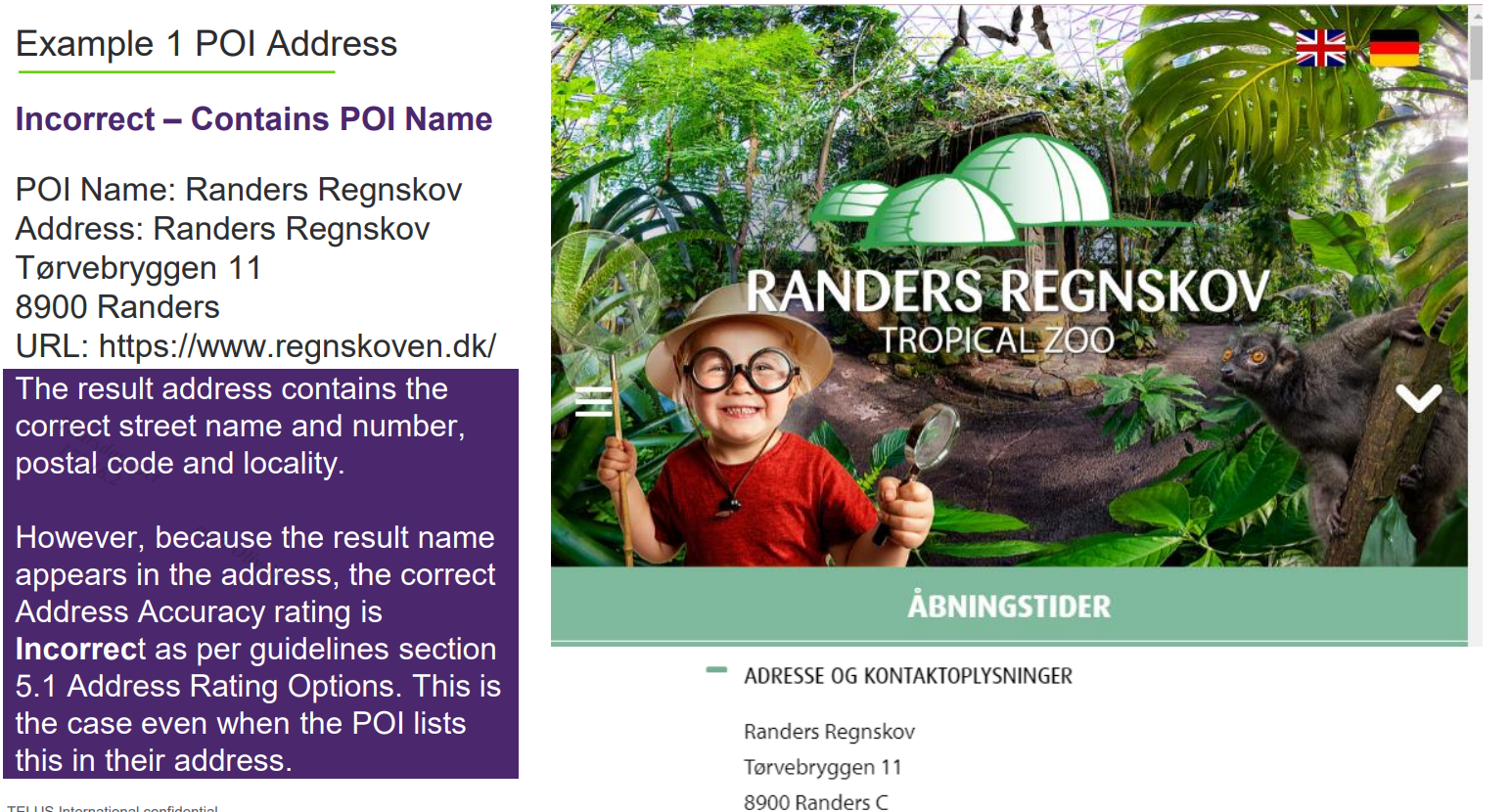
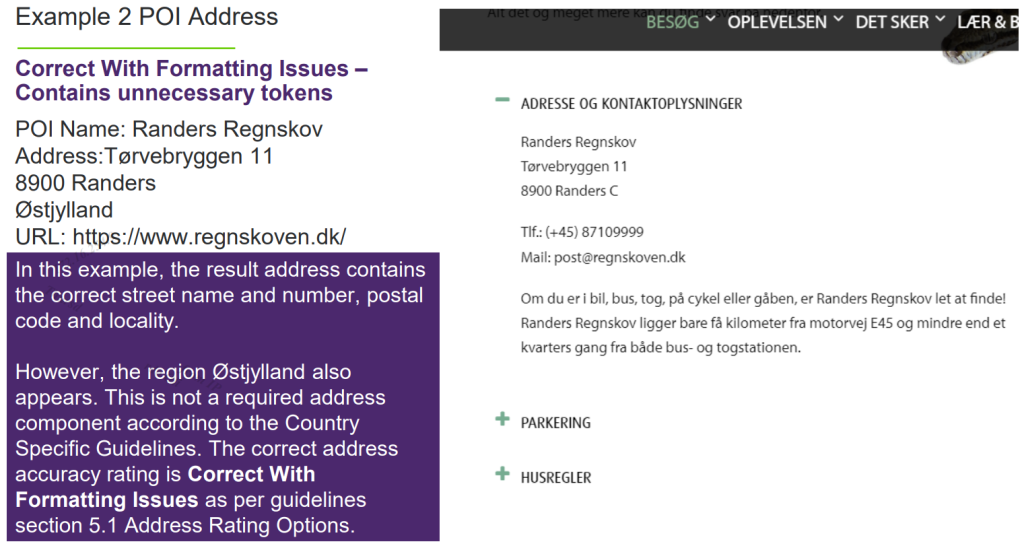

Rating the Pin accurately can become a little more complex in situations where POIs share spaces with other POIs, for example in shopping malls, or larger, subdivided buildings.
Pin accuracy is rated on a principle of Best Available Evidence.
• If street imagery or other strong evidence confirms a POI’s specific location under a
shared rooftop, only that location will be considered Perfect
Should no strong evidence be found for a POI’s location under a shared rooftop, then the entire rooftop is considered Perfect
When several rooftops share an address and there’s no strong evidence to confirm which rooftop houses the POI, all rooftops sharing the POI’s address will be considered Can’t
Verify
Another pin rating possibility is that of Next Door, guidelines section 9.2.4. Next Door.
A pin is considered Next Door if it drops on the property immediately next to the intended property. However, it must also be:
• on the same street as the intended property
The Next Door property must have the same street name as the POI on the same side of the street as the intended property the first property to any side of the property on the same block as the intended property
• the first property to any side of the property
• on the same block as the intended property
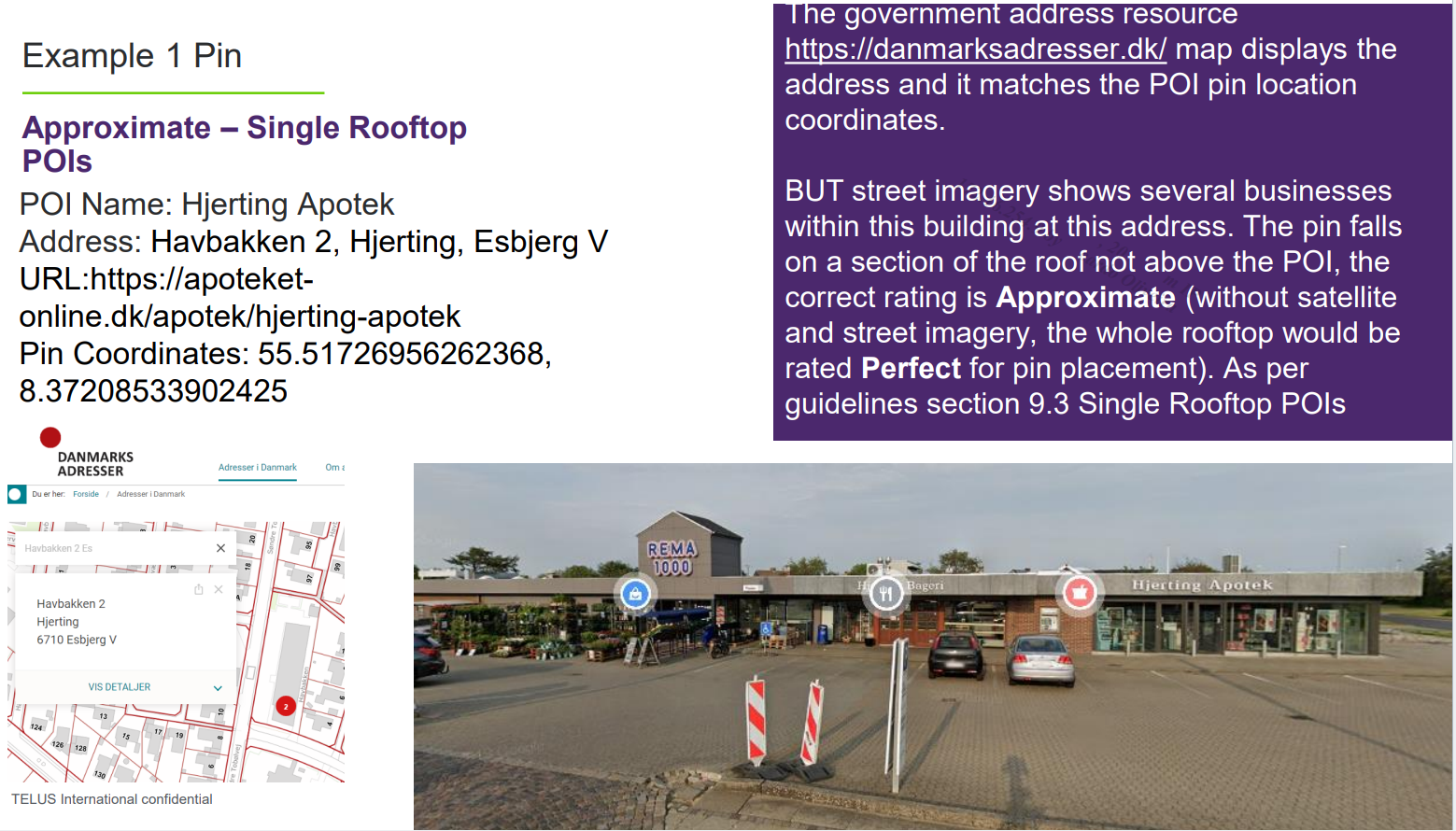

POI Evaluation – Denmark tips
2.3 Category (POI Evaluation Guidelines, section 8. Category)
A POI’s category should best reflect the dominant identity of the
POI. When evaluating the POI’s
category, the considerations are:
• Is this category accurate for this POI?
• Is this the best fit category available in the category list?
A category can full describe, generally describe, partially describe, or not describe the POI. A category that does not describe the POI should be rated Incorrect
HINT: Familiarize yourself with the POI categories and their localizations in the category list

Rule 1 – Always choose the best fit category in the category list
Rule 2 – Read reviews to help you determine the correct category
Rule 3 – When multiple categories equally describe the POI, use the business name to decide
taking precedence (i.e. Pizza & Steak = Pizza)
Rule 4 – Do not rely on categories designated by Search Engine Results Pages (SERPs) or crowdsourced user review sites
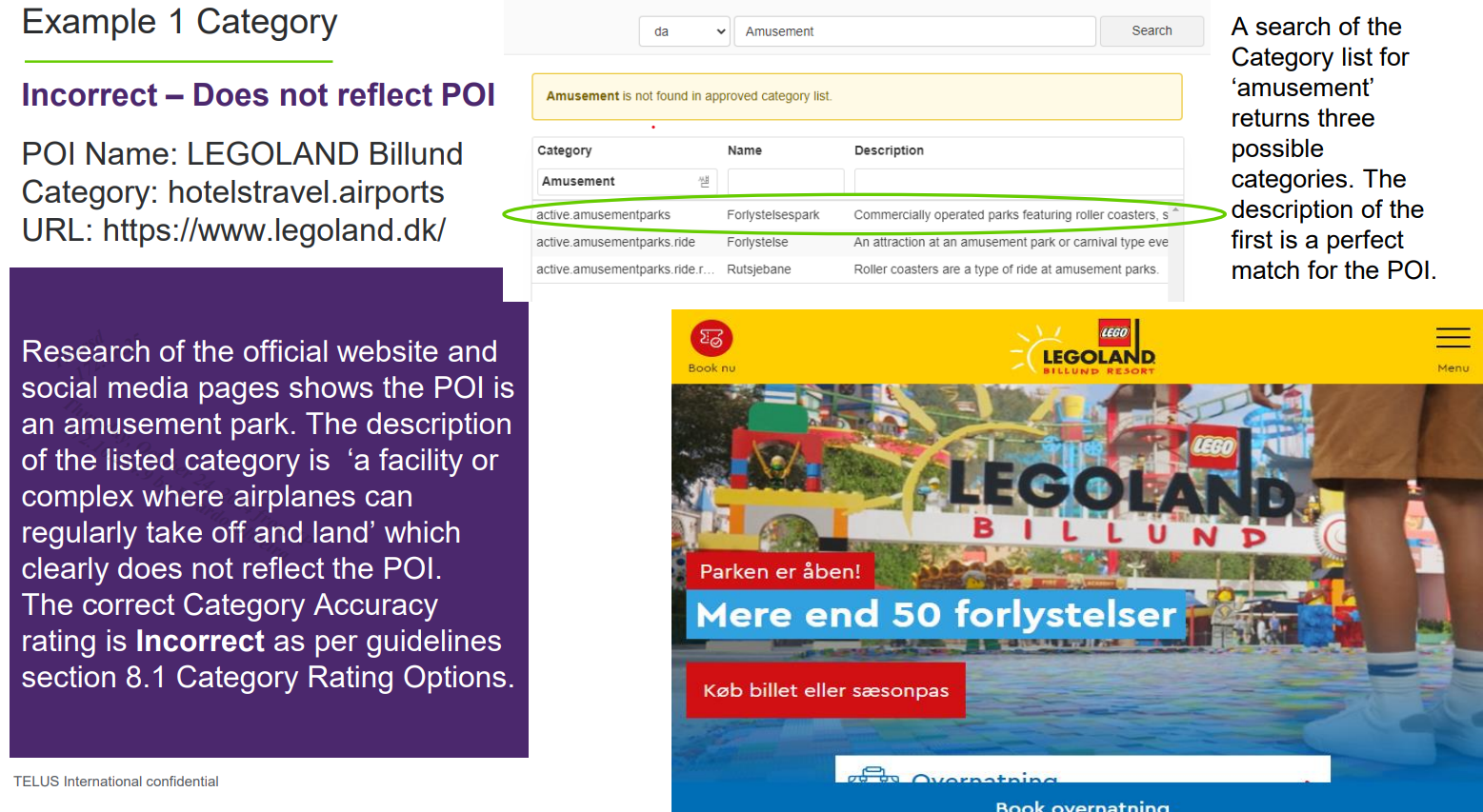
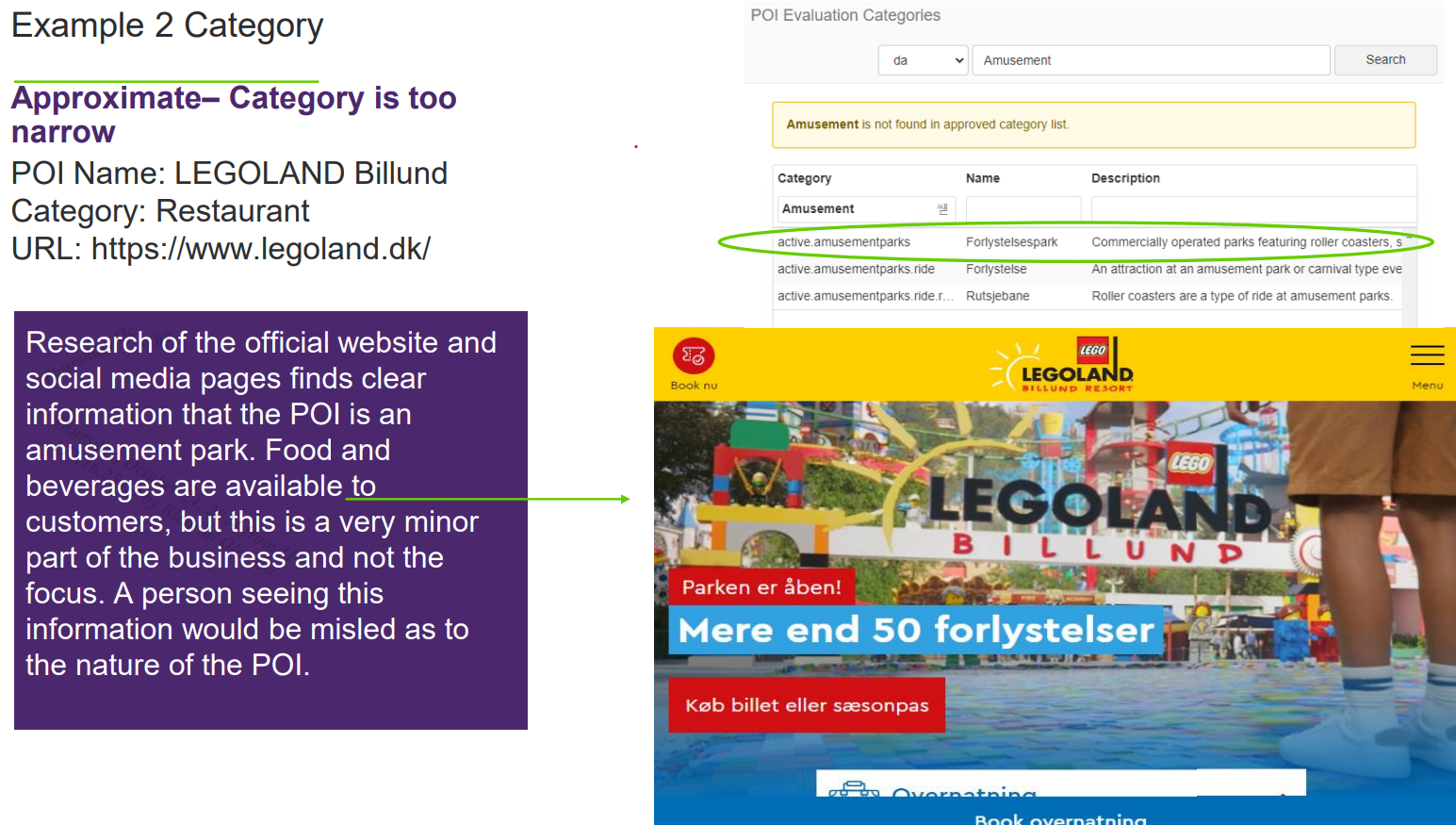
2.4URL (POI Evaluation Guidelines, section 7. URL)
In the task, the listed URL is checked to see if it matches the official website address. The URL can be determined to be Correct, Partially Correct, OK Without, Missing, Incorrect or Can’t
When research shows that the POI has an official website, and the listed URL navigates to the same official website the URL is deemed correct. However, if the result URL is different to the official website, even if the result URL redirects to this, it cannot be rated Correct. This can happen when a POI has rebranded or been taken over and a new website is created with the new POI name and details.

The phone number should be verified using official resources, such as business’s official website, claimed social media pages, and/ or other official resources.
The phone number data can be rated as Correct, OK Without, Missing, Incorrect or Can’t Verify.
Can’t Verify is used only when a phone number cannot be verified using an official online source, i.e. no phone number is found on any official source. POI Evaluation Guidelines, section 2.1.3 Official Resources
HINT: Formatting is not a reason to demote a phone number to Incorrect
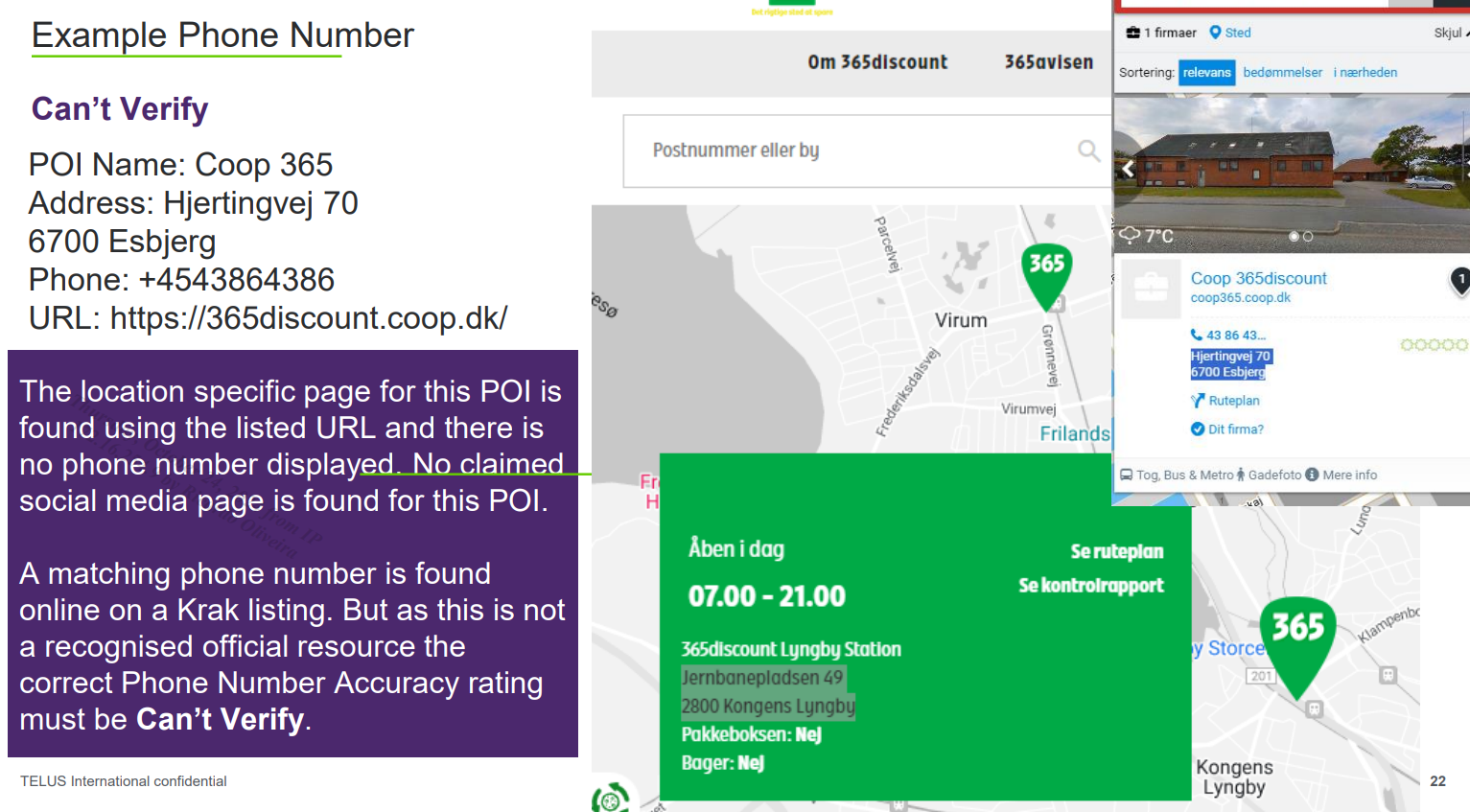
Access Points are locations where maps services route a user when they request directions to a POI. Therefore, Access Points are where a user would be told that they have arrived at a POI or business.
There are two types of Access Points that can be displayed, Vehicular and Pedestrian. For POI Evaluation, only vehicular access points are considered, except in cases where the POI is specifically a walk-up POI.
Access Point Rating options are Correct, Approximate, OK Without, Missing, Wrong and Can’t Verify.
HINT: Section 10.8 of the guidelines provides many Access Point Rating Examples and explanations
Critical Issues
An Access Point will always be considered Wrong when a critical issue exists. The critical issues are:
HINT: Critical issues are covered in more detail in the guidelines section 10.3.2. Access Point Critical Issues
